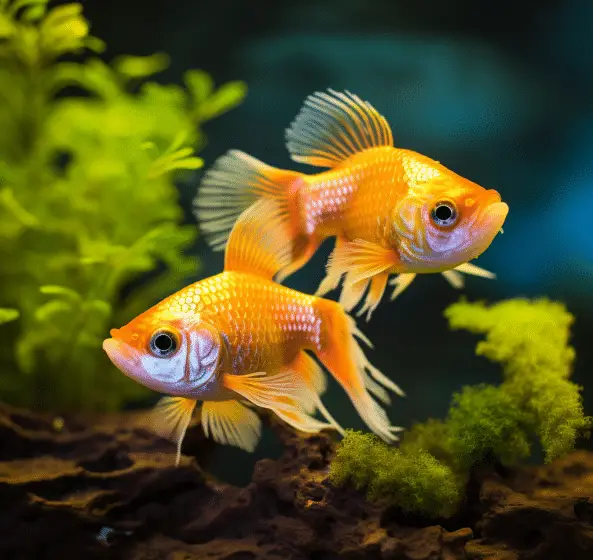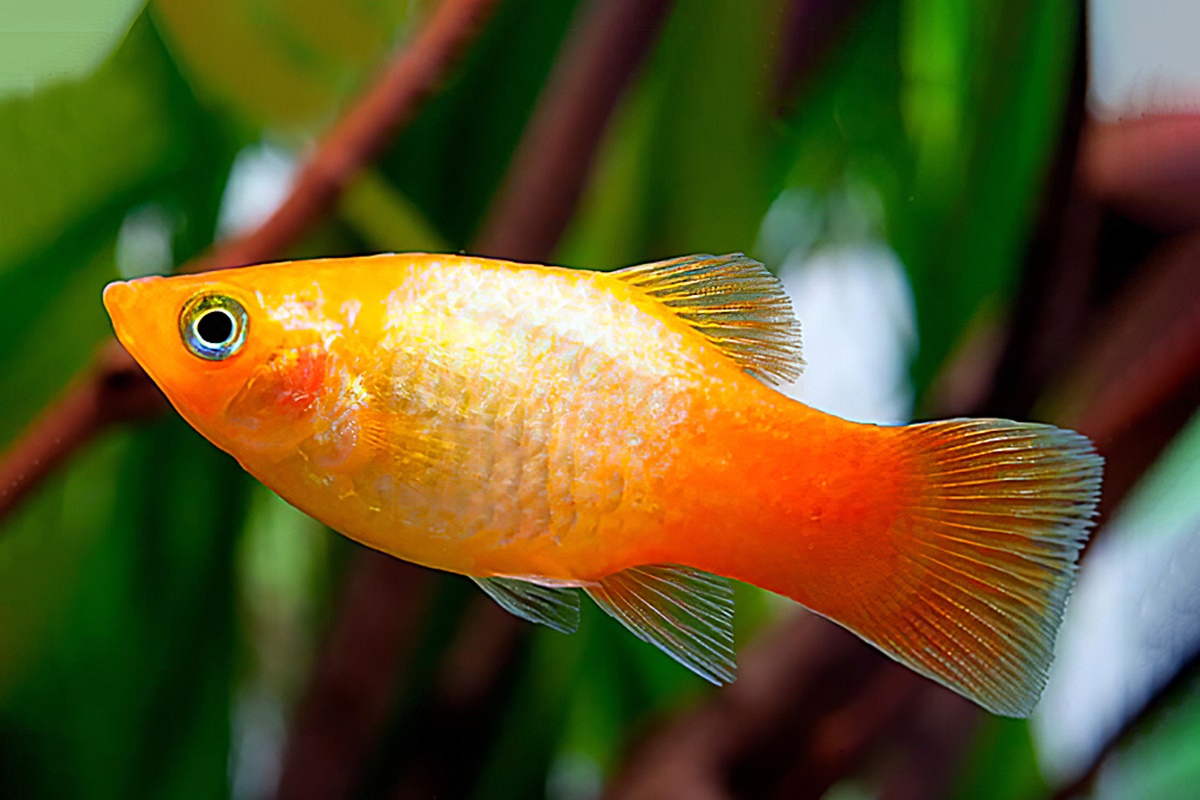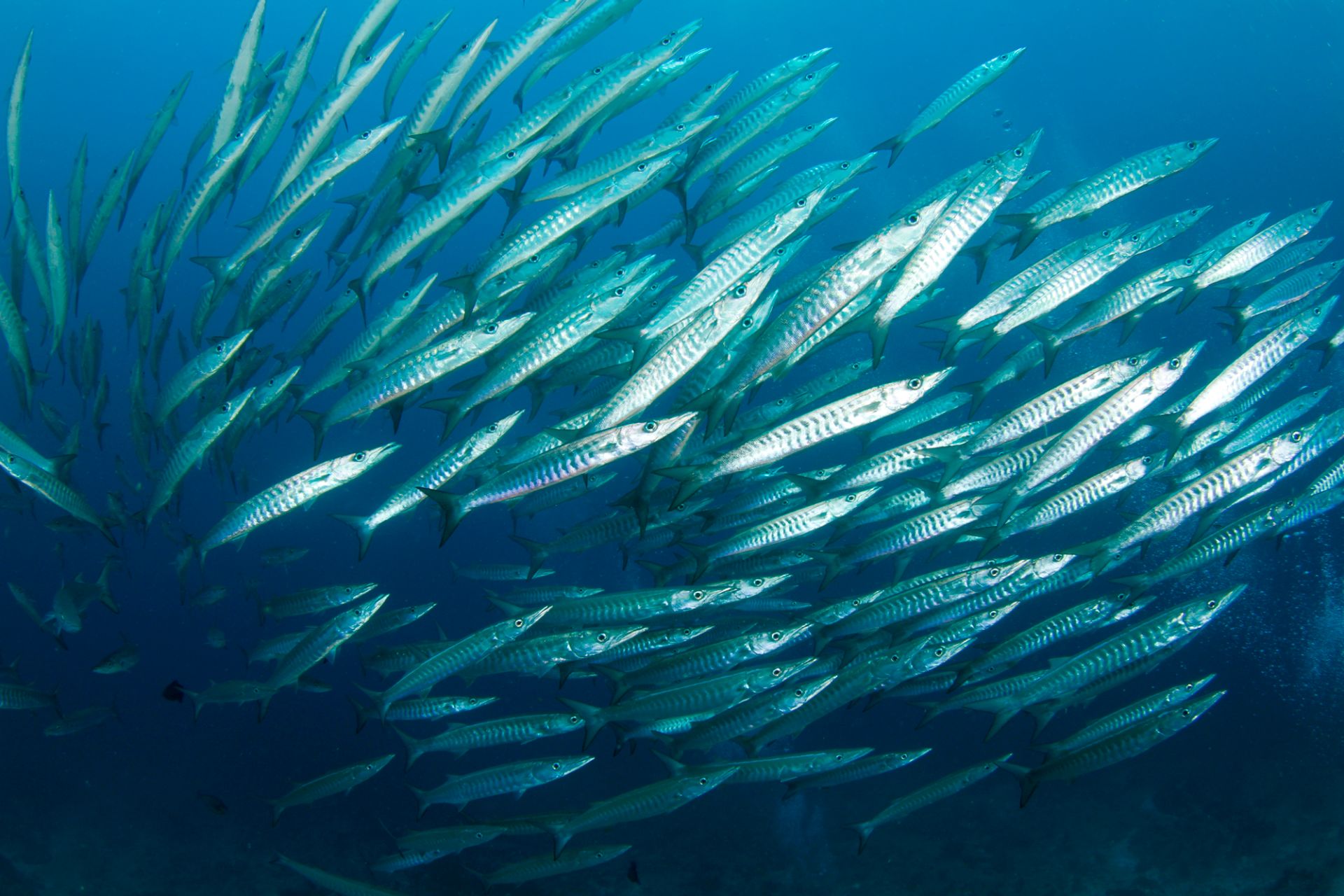Are Mollies Schooling Fish

Introduction
Do Mollies School Fish? Aquarium fish are diverse, with each species having its own behaviors and social systems. Mollies (Poecilia sphenops and Poecilia latipinna) are popular for their bright colors and charming personality. Fans and aquarists often wonder: Are mollies schooling fish? This introduction examines molly social dynamics and whether they school like other aquatic species.
Molly fish are popular in community aquariums because they are energetic and social. Their brilliant colors and energetic swimming movements liven up aquatic shows. Although gregarious, mollies rarely form tightly coordinated schools like cardinal tetras or minnows. Understanding their social behavior is essential to matching them with the correct tank mates and surroundings for their well-being.
We will discover the factors that affect mollies’ gathering behavior in aquariums and the wild as we study their fascinating social dynamics. These fascinating and colorful fish’s social character is illuminated by this study of their preferences and interactions.

Are molly fish schooling fish?
Mollies don’t school — that is, they don’t move together in synchronicity — but they do swim in a shoaling pattern. They prefer being with other mollies and similar peaceful, shoaling fish, and they get stressed and fearful when they’re alone. Experts recommend keeping at least five mollies together.
In their natural habitat and aquariums, they form loose, sociable groups rather than carefully coordinated schools like some other species.
Mollies swim in groups in freshwater bodies in the Americas to avoid predators. These groups are less organized than true schooling fish.
Mollies are social and can create loose shoals or groups with other fish in aquariums, especially with the right tank conditions and partners. They may not school like tetras or minnows, but they prefer being around their own kind and other community fish, producing a pleasant and social aquarium.
How many mollies should be kept together?
I need how many molly fish? Mollies breed like many livebearers, thus we recommend two to three females per male. This ratio lets girls escape the boys’ gaze.
The quantity of mollies in an aquarium varies on tank size, water quality, and type. Mollies flourish in small groups of their own type and thrive socially.
Three to four mollies are ideal for a 10-gallon aquarium. This lets them socialize naturally and reduces the risk of any one getting stressed or violent.
You can keep more mollies in larger tanks, but filtration and water quality are important. To prevent male harassment of females, keep the ratio at one male to two or three females. Overcrowding can cause territorial disputes and water quality issues, so be careful to keep your mollies healthy. Provide enough hiding places, plants, and other enrichment in the tank to alleviate stress and encourage natural activity in mollies.
Where do molly fish come from?
To distinguish it from its congeners, Poecilia sphenops is sometimes termed short-finned or common molly. From Mexico to Colombia, they occupy freshwater streams, brackish, and marine environments.
Poecilia sphenops and Poecilia latipinna, or molly fish, are native to North and Central American freshwaters. Their natural range includes Mexico, Honduras, and Belize in Central America and the southern US. They live in rivers, streams, canals, ponds, and marshes.
Mollies may live in clear, freshwater rivers, brackish coastal waterways, and even saltwater settings. Their tolerance to different water conditions makes them popular aquarium fish. Mollies have been selectively bred in captivity for their stunning look, with a wide range of color variants and fin varieties.
Mollies are popular aquarium fish and ornamental and community fish globally due to their hardiness and adaptability.
Do mollies need salt in aquarium?
It’s their tolerance of salt that led to the myth they require salt to be healthy. That is not true, they don’t. That said, they do seem to prefer hard, alkaline water.
Molly fish are adaptable to many water conditions and can withstand mild salinity. Their natural habitats include freshwater, brackish, and even somewhat saline areas like coastal estuaries and lagoons. Whether aquarium mollies need salt depends on their type and desired circumstances.
Mollies come in three primary types: sailfin, balloon, and lyretail. Brackish and slightly saline water suits sailfin mollies. Adding a little aquarium salt (marine salt) may assist these mollies recreate their native habitat and improve their coloration and health. But balloon and lyretail mollies are more freshwater-adapted.
Adding salt to the aquarium depends on the sort of mollies you have and their preferences. Keeping mollies in a communal tank with other freshwater fish requires a balance to meet everyone’s demands. Maintaining a healthy aquarium for mollies and other aquatic life requires regular salinity monitoring.
Are molly fish aggressive?
Mollies are typically peaceful, shoaling livebearers that make an attractive, active display in a community aquarium. You might see some displays of mildly aggressive behavior if you have too many males in the tank. Ideally, you want one male molly to three or more females.
However, their temperament depends on their personalities, tank circumstances, and interactions with other fish. Mollies are usually not aggressive, but some situations can cause them to be.
Crowding may cause mollies to attack. Mollies can become territorial in small aquariums with many fish, especially while mating and breeding. Males can be territorial, while females may be violent if their territory or hiding locations are threatened.
In a clean, well-sized aquarium, mollies are more inclined to socialize with other fish. The tank must have enough hiding spots, plants, and swimming space. Maintaining a male-to-female ratio of one male to two or three females can also lessen aggressiveness by making males less territorial when wooing females. Proper tank management and care keep mollies calm and harmonious community members.
Are Mollies considered schooling fish or do they prefer to swim alone?
Molly fish (Poecilia sphenops and latipinna) are not schooling fish. They form tiny shoals or groups in their natural habitat and behave more loosely and socially. Mollies love the companionship of their own kind and other community fish in aquariums and can be kept in small groups without schooling like some other fish.
Mollies do not form schools, but they do appreciate the company of their conspecifics and can live with other fish species, producing a peaceful and social aquarium. These fish have dramatic colors and fin differences, making them ideal for a diversified community tank.
When reproducing, they prefer company of their type. Men actively court females, so a balanced male-to-female ratio is needed to prevent male pestering. Mollies are livebearers. While they don’t form tight schools, mollies are sociable fish that benefit from tank companionship and improved health and behavior.
Do Mollies exhibit schooling behavior in the wild or in aquariums?
Molly fish, both in the wild and in aquariums, rarely school together. Mollies create loose, social groups or shoals rather than schools in their natural habitat. They swim in groups to find safety, although their grouping is less organized than schooling fish.
In aquariums, mollies form gregarious yet unstructured groups. They swim with their conspecifics and other community fish and love socializing. Unlike tetras and minnows, they do not form structured schools.
Community aquariums are ideal for mollies since they like to socialize with their own kind and other species. Aquarium lovers like them because of their gregarious behavior, even if they don’t school.
What factors influence the social behavior of Mollies, and do they form cohesive schools like some other fish species?
The social behavior of mollies is influenced by several factors, and it differs from the cohesive schooling behavior observed in some other fish species. Mollies tend to form loose and social groups rather than tightly coordinated schools, both in the wild and in aquariums.
One influencing factor is the need for safety in numbers. In the wild, mollies may group together for protection from potential predators, as there is safety in being part of a larger aggregation. This social grouping behavior is less structured than the synchronized swimming seen in true schooling fish.
In aquariums, mollies exhibit social behavior by swimming together and engaging in interactions with conspecifics and other community fish. While they may not form the organized and highly coordinated schools observed in species like tetras or minnows, they enjoy the presence of their own kind and can coexist harmoniously in community tanks. The loose social behavior of mollies in both natural and aquarium settings makes them suitable for community aquariums where a mix of fish species can thrive together.

Conclusion
Mollies, the lively aquarium fish, reveal a fascinating aspect of aquatic life through their social behavior. Mollies are energetic and friendly, but they do not school like other fish. Both in aquariums and in nature, they form loose, sociable groupings.
To give mollies the best tank circumstances and companions, aquarists and fans must understand their social dynamics. Mollies appreciate being among their conspecifics and other community fish, giving vibrancy and activity to community aquariums.
Mollies are attractive and aquarium-friendly despite their lack of severe education. Their vibrant colors, charming personalities, and social connections make them popular with aquatic lovers. We appreciate aquarium fish’s engaging and diversified environment as we study mollies’ social behavior. Each species adds its own appeal to the aquatic world.



